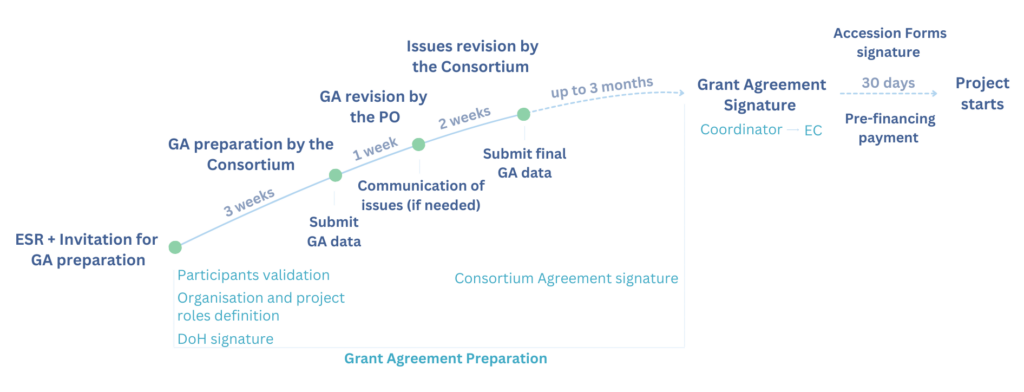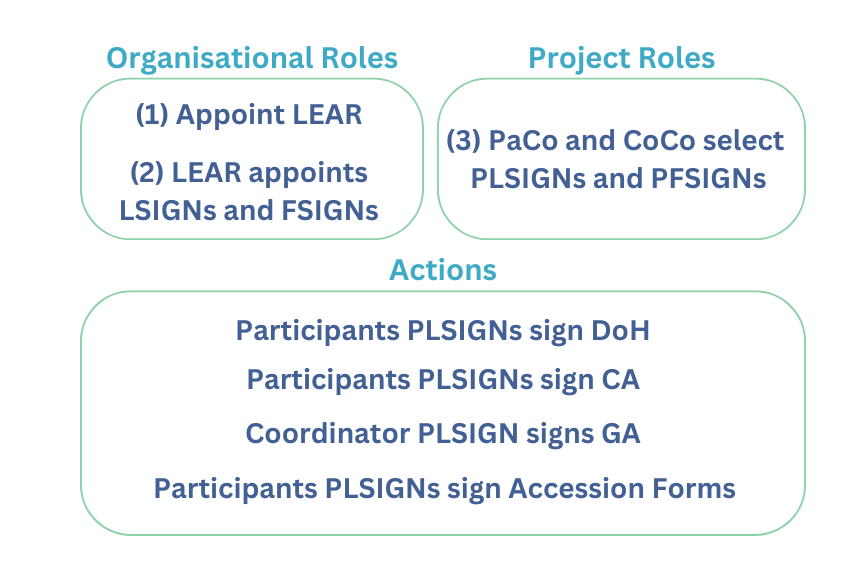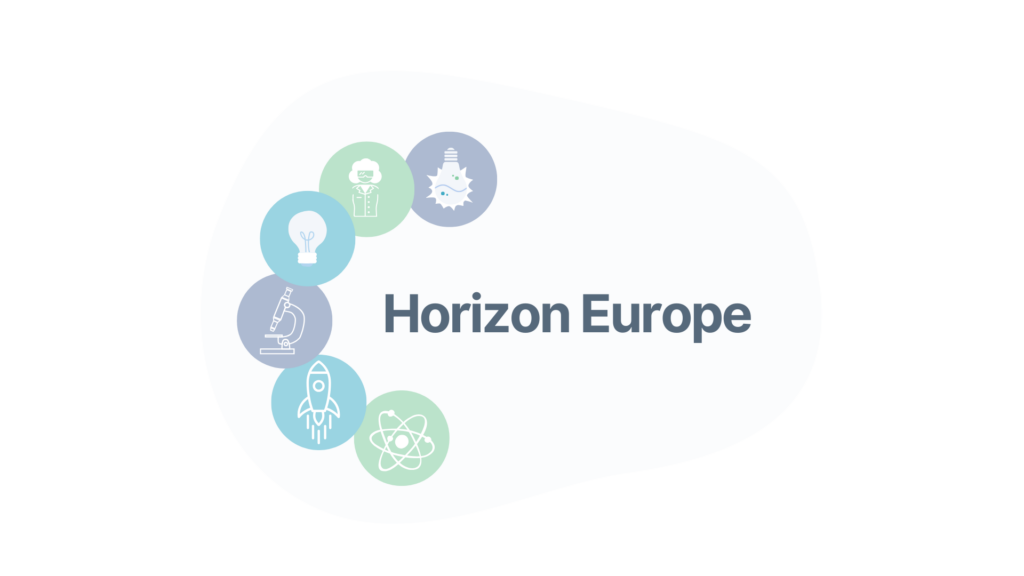If your project proposal is awarded, after receiving the Evaluation Summary Report (ESR), the coordinator will be invited to prepare the Grant Agreement (GA). This phase is also known as the Grant Agreement Preparation (GAP), however it involves much more. In this article, we streamline the GAP process.
From project awarding to its start
The entire GAP process typically takes three months, however after receiving the invitation letter to prepare the GA, the Project Officer (PO) will send a list of requirements to the coordinator to be completed in two to three weeks, which include:
- Completing the participants’ legal, administrative and financial information and the Declarations of Honours (DoHs) signature;
- Filling the portal with the project information such as deliverables, milestones, reporting periods, amount of prefinancing, and budget, which compose Part A of the Description of Action (DoA)
- Uploading the narrative technical description or Part B of the DoA.

Legal Signatories and Declaration of Honour
Before defining the legal signatories, the beneficiaries must ensure that their Participant Identification Code (PIC) has been validated by the European Commission’s (EC) Central Validation Service. If not, the person who registered the entity will have to submit a series of documents (completed legal entity identification form; VAT and registration extracts; statutes or act of establishment) to obtain the validation.
Once their PIC is validated, all beneficiaries must select the organisation and project roles in the Participant Portal.
- Each beneficiary appoints their own Legal Entity Appointed Representative (LEAR), who will be responsible for all the actions in the portal. This includes providing specific documentation (LEAR appointment letter and LEAR role and duties, declaration of consent, proof of identity and documents proving the authority of the legal representative).
- The LEAR will then select the individuals with the authority to sign GAs and Amendments – Legal Signatories (LSIGNs) – and those with the authority to sign the entity’s financial statements – Financial Signatories (FSIGNs).
- The Participant Contacts (PaCo) and Coordinator Contacts (CoCo), defined during the proposal setting-up, become the project contacts. They will have to select the Project Legal Signatories (PLSIGNs) and Project Financial Signatories (PFSIGNs) for each beneficiary from the list of LSIGNs defined by the LEAR.
After defining the project roles, the participants’ PLSIGNs receive a notification to sign the Declaration of Honour in the Participant Portal. At the end of the GAP process, the coordinator PLSIGN will have to sign the Grant Agreement and the participants PLSIGNs will have to sign the Accession Forms.

Some participants will also undergo the Financial Capacity Assessment (FCA). The EC’s Central Services requests this assessment to ensure that the entity has the financial capacity to implement the action.
Grant Agreement
The GA is the legally binding contract between the Consortium and the EC. It states the terms and conditions to be eligible to receive the funding, and it includes the project’s objectives, work plan, budget and reporting requirements. This document is produced automatically with information obtained from the Portal. The GA is composed of specific sections:
- Legal and administrative provisions set by the granting authority;
- Annexes detailing the project, including the DoA, budget, and special clauses.
The coordinator will be the one responsible for submitting the GA data to the Participant Portal. This will include adding the details about the work packages, deliverables, milestones and risks to online tables. While project proposals should not be subjected to significant changes, the ESR often provides comments and suggestions that can improve the project and should be addressed. During this phase, it is thus critical to clearly communicate and work collaboratively with the project partners to finalise this process within the given time frame set by the PO.
Once the DoHs are signed and the GA data has been completed, they can be submitted for review by the PO. Often, the PO provides comments that need to be addressed and reviewed by the consortium before final approval and GA signature.
Consortium Agreement
Before signing the Grant Agreement, all partners must sign a Consortium Agreement (CA). The Consortium Agreement (CA) establishes the relationships between the consortium partners, acting as a commercial agreement between all of them. While the GA cannot be modified, the CA is flexible and can be tailored to meet the project and partners’ specific needs.
The CA helps to prevent conflicts, ensuring smooth collaboration within the consortium. It normally includes topics such as intellectual property rights, future use and commercialisation of the project results, knowledge transfer between the partners, reporting process within the consortium, conflict resolution process, etc. This agreement is typically prepared by the coordinator however all the partners are required to sign. The DESCA (Development of a Simplified Consortium Agreement), a model CA that resulted from a collaborative project supported by the EC, can be used as a reference for structuring the final CA.
Grant Preparation Support
To successfully complete and sign the Grant Agreement and start your project, it is crucial that all the steps and tasks are followed and completed within the time frame. Every year, the EC organises Horizon Implementation Day webinars, including a session dedicated to the Grant Agreement Preparation (access the most recent session). Additionally, detailed step-by-step information is available in the F&T Portal Online Manual. For more personalised assistance, contact our team to benefit from their expertise and support through the Grant Preparation process. For more information, contact us or visit Syntropie’s website.

